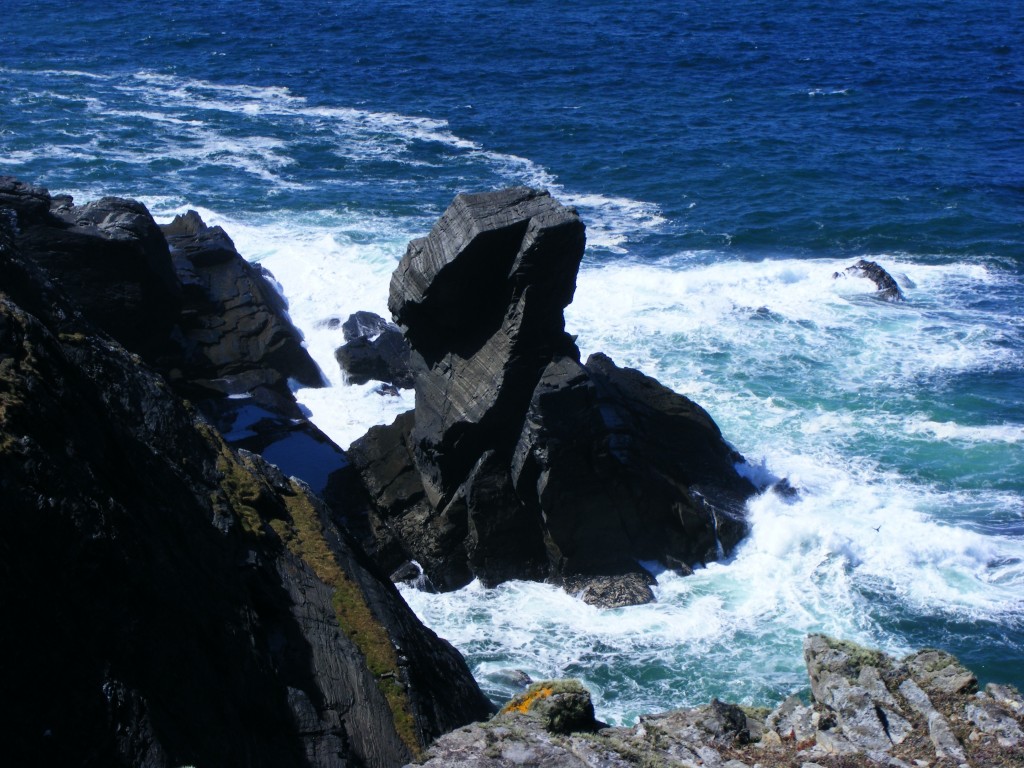Trees are a rarity here in Connemara as there are not many varieties that are able to thrive in the marshy soil or withstand the harshness of the wind and rain. I stopped to take a photo of this small copse at the side of the road near Leenane, about 20 miles northwest of Clifden. It was an unusually calm day and the rich colour of the grass and the calm pastoral nature of the grazing sheep caught my eye. I love the silhouette of the trees against the pale blue and white of the sky, also the low shaft of light at grass level in the photo above. Here’s another photo below from a slightly different angle.
This next tree was nearby on the other side of the road. I’m not sure if it is a hawthorn or a holly as I didn’t get close enough to inspect the leaves. It’s shape is typical of trees growing in exposed areas such as this, right on the edge of Killary harbour. Its has developed with the prevailing wind and it’s branches have literally swept over, forming a beautiful curve.
This next tree was also close by and it is a Hawthorn, one of the hardiest native Irish trees. It has been adorned with pieces of cloth and is known as a rag tree. These have been placed here by people who believe that an illness might be cured by offering a scrap of clothing from the person who is unwell. Others tie the cloths in order to make a wish which they believe might come to pass as the cloth fades away.
I’ve developed a love of trees since I’ve lived in Connemara and especially for these weather worn species that have been shaped by the harsh climate. Like the scraggy Connemara sheep that dot the hillsides, they are survivors here.













































